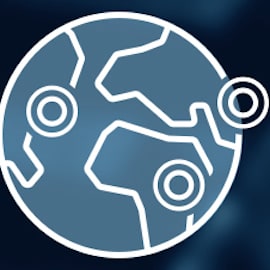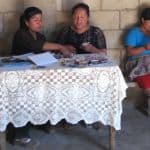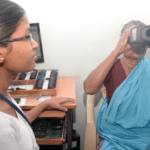Hardware Innovation is … Hard: How These Entrepreneurs Overcame the Challenges
So, Walmart recently agreed to buy a majority stake in Flipkart – a popular mobile app-based online retailer in India – for $16 billion. That’s roughly a billion for the founder, who started his app-based innovation with about $1,500. “Good for him!” I thought. Not too many have such luck. And then I immediately thought about an expectant mother in rural Maharashtra, India, whose version of luck was being able to deliver her baby and survive the process, since her anemia was diagnosed fairly early and she has been on iron supplements to counter it.
It is not all luck, actually: Her survival (and that of thousands of other mothers) is possible, in large part, thanks to a non-invasive anemia screening device from Biosense. She might not understand the concept of an app, let alone shopping on Flipkart, but the impact of the hardware-led innovation that led to her survival is all too real to her.
(Note: Biosense and the other companies mentioned have received investment capital from Villgro, where the author serves as chief technology officer and health care practice lead).
Hardware-led innovation is…hard!
It was one such rural mother, whose luck had run out in a peripheral health center where undiagnosed anemia took her life, that motivated Biosense co-founders Dr. Abhishek Sen and Dr. Yogesh Patil to embark upon a journey of innovation and entrepreneurship. It was a radically new path for these freshly minted physicians. Fast forward seven years and Biosense is in scaling mode, having grown slowly, painfully and steadily into an entity focussed both on its original mission of serving public health needs – and also on reaching a sizable share of the private health care market in India. But its journey was not as “utopian” as Flipkart’s. For starters, hardware-led innovations are, for lack of a better word, really hard to pull through. The resources and time required to churn out iterations are much larger, even if one has a clear understanding of the problem-solution fit and the design expertise needed. Additionally, the lack of a mature ecosystem to support such hardware-centric enterprises is a stumbling block. The journey of a social entrepreneur is fraught with a minefield of crippling mistakes and cash-robbing redesigns. It is not surprising that many entrepreneurs and investors avoid risking their resources on such ventures.
Know who will pay for it, why and how much
Another complication is the fact that the buyer of this type of innovation is distinctly different from the user, who in turn is entirely different from the beneficiary. Even a simple innovation is bound to become a lot more complex to deploy if all these different stakeholders have to be satisfied. The Bempu bracelet by Ratul Narain is one such example. Designed as a simple intervention to reduce infant mortality due to hypothermia, the bracelet measures the infant’s temperature and raises an alarm when it falls. Worn by the infant and monitored by the caregiver, it is an effective solution – but who will buy it and help deploy it?
That is a seemingly simple question with multiple complex answers. In the Indian context, it is the government that is capable of purchasing this at scale, and is also tasked with reducing infant mortality – especially the state government, which is responsible for public health. But to complicate matters, the state health budget has two components, funded and approved at two different levels: Suddenly, identifying the buyer is not so obvious. In some ways, the biggest thing Narain had to accomplish was NOT designing the bracelet, but figuring out which line item in the budget is the key to a government sale. But he realises that while this path is clearer now, it is certainly not a sprint to the end, but a marathon – 29 states in India means at least that many stakeholders to convince – pilot after pilot after pilot.
Radical Innovation requires heavy concept selling
Imagine the plight of Satish K.S., the founder of Flybird Innovations, who discovered this reality the hard way and had to overcome it without running out of cash. Satish was a 13-year veteran of aerospace R&D and product development, but passionate about agriculture. There was an acute water shortage in his hometown of Chitradurga, and yet farmers were not using irrigation technology – mostly because small farmers couldn’t afford it. So he left his job and started creating a product for water management – a controller that automated water delivery to crops. After some hard knocks, he pivoted to an efficient drip irrigation system, enough to satisfy a small farmer’s needs, at an attractive price.
But selling a radically new farming practice required significant behavior change, and hence extensive concept selling. He started doing small demos at farmer fairs and saw some traction, but achieving serious scale required big sales muscle – Flybird was too small to attract such talent. Though Satish’s story has a pleasant ending – he managed to get a co-distribution/co-branding solution with a major agribusiness – many hardware-led enterprises flounder and slowly fail because they underestimate the stamina required to tackle this dissemination step. Unless well-planned and executed, the cost of sales/customer acquisition for these one-product companies quickly becomes prohibitive to enable scale.
All these innovators did get one aspect right – they were able to leverage the support their ecosystem partners offered vis-a-vis mentoring, knowledge, networks, etc., and navigate the challenges a typical hardware-led innovative enterprise faces. But such partners are also few and far between, a gap that Villgro hopes to fill in its mission to create impactful, innovative and successful enterprises. With our investment and outreach programs iPitch and Unconvention, and through partners like ASME iShow, BIRAC and the DFID-funded INVENT program, Villgro strives to support many such innovators – who went well beyond tapping and swiping!
I respect and empathise with the plight of these innovators, and wonder if the ecosystem will mature fast enough to offer them enough support before the hard path of app-less-ness consumes them. Yet I am touched by the fact that this enthusiastic lot is laboring on, fueled by the smiles on the faces of their beneficiaries – although they assure me that they would also gladly take the next billion-dollar exit!
Arun Venkatesan is the chief technology officer and health care practice lead at Villgro.
Main photo: a Biosense product in use. Homepage photo: a Flybird Innovations product. Credit: Villgro
- Categories
- Agriculture, Health Care, Investing, Social Enterprise, Technology



